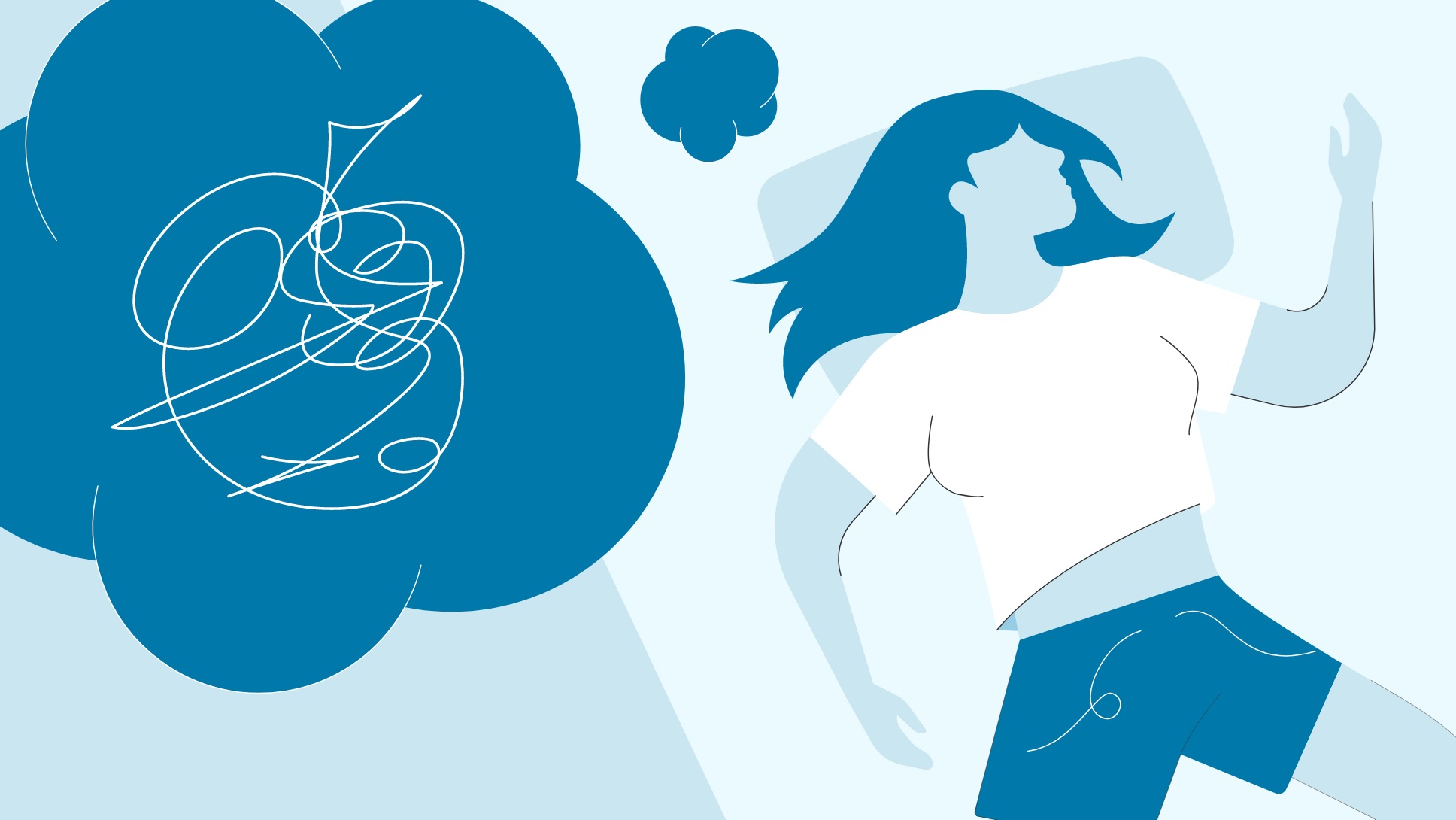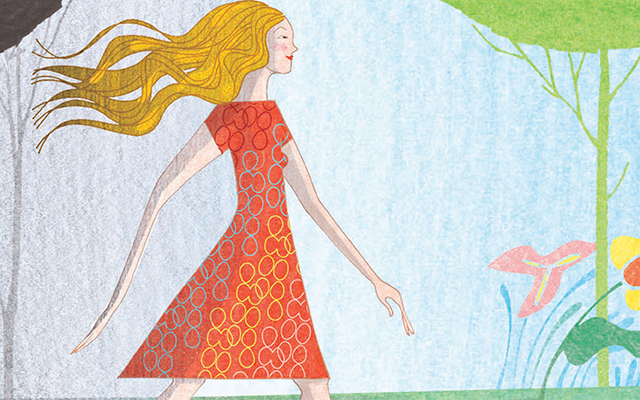Lindsay Guentzel, a Minneapolis-based food writer and television personality, once enjoyed a regular gig covering baseball for a Twin Cities radio station. Things were usually quiet during the off-season, so she didn’t think much of it when she had trouble logging in to her work email before the 2015 season began. Assuming she’d missed a prompt to update her password, she reached out to the IT team for help — and then received a call from a manager in a different department.
“He said, ‘Hey, this is unfortunate, and sorry this is how you’re finding out, but you were let go a couple months ago and we thought so-and-so had told you,’” Guentzel recalls. “I couldn’t breathe or speak.”
For a while, she tried not to think about it. “I bottled it up, shut it away, and tried to move on. I was very bitter and resentful and angry. I took joy in their bad ratings, until I realized that was making me miserable, and I had to let it go.”
She discussed it with her therapist and they worked through her pain, both about losing the job and feeling abandoned by most of her former coworkers. One of them told her that the IT person had joked about her email asking for help. “It was so hard knowing people were enjoying my embarrassment and not reaching out. That was the most traumatic part.”
What Guentzel experienced was a double whammy of something we all encounter but no one enjoys — rejection. It can happen in our romantic lives, friendships, creative pursuits, families, or careers. Or sometimes, as in Guentzel’s case, it can hit in multiple areas at once, a job loss compounded by expulsion from a network of friends and colleagues.
Rejection carries a unique sting, says psychologist Leslie Becker-Phelps, PhD, author of Bouncing Back from Rejection. “Even if it’s a ‘small-r’ rejection — where someone rejects your idea or says, ‘This isn’t clicking’ — if it’s tapping into and reinforcing a bigger story about who you are, it can feel like a ‘big-r’ rejection of you as a human being.”
But we’re all capable of acquiring better tools and stories that empower and support us, says psychologist Christian Conte, PhD, author of Walking Through Anger: A New Design for Confronting Conflict in an Emotionally Charged World. “As long as we’re alive, we’re resilient beings and can find better ways to adapt and handle rejection.”
Deep Roots
We can thank evolution for making rejection so painful. Conte notes that 10,000 years ago, humans literally needed a clan to survive.
“Compared to Homo sapiens, Neanderthals had a smaller portion of their brains dedicated to social interaction,” he says. The Neanderthals eventually died out, and Homo sapiens became dominant, perhaps in part due to stronger social cohesion. “Homo sapiens knew we needed each other. We’re hardwired to be connected to others.”
That’s one reason rejection can feel like such a threat, explains holistic psychologist Anna Roth, PhD. “It’s a cue of danger for us to feel excluded,” she notes. “That hovering attention around belonging and exclusion is part of our evolutionary wiring and our survival as a species.”
Childhood experiences can also deeply affect how we respond to rejection later in life. As infants, we’re not able to care for ourselves, notes Becker-Phelps. We depend on caregivers to keep us safe physically and emotionally.
Our early experiences of attachment to caregivers can lead us to internalize beliefs — some helpful, some not so much — about ourselves and others. Attachment theory was developed by British psychoanalyst John Bowlby in the 1950s as a way to understand how early child and caregiver interactions shape social and emotional development.
“In those early years, you get feedback from caregivers,” says Becker-Phelps. “If you’re upset and a caregiver responds to you with anxiety, you might feel anxious about your distress and start to feel that you’re unlovable, inadequate, and flawed.”
Over time, this can become an entrenched belief, or a story of There’s something wrong with me, or I can’t rely on others to comfort me. “Then in adulthood, if there’s rejection, it feels bigger,” she adds. “It taps into that feeling and reinforces it.”
Childhood loss can also contribute to damaging beliefs, says Conte. “If a child had a parent pass away or leave the family at an age when they couldn’t cognitively understand what was happening, that can lead to a sense of being abandoned. Then later on when they get a sense of rejection, it’s like, Now you’re leaving me too.”
So, are those of us who internalized unhelpful beliefs at a young age doomed to a lifetime of insecurity and rejection sensitivity?
Not at all, says Roth. “You can use rejection as an opportunity for deeper self-acceptance and healing. Look for the story you learned, find its origin, and heal it so you can have a different story going forward.”
Your Brain on Rejection
When we experience a strong sense of rejection, our brain’s prefrontal cortex — its rational, logical part — becomes less active. One study found that subjects who were excluded from a virtual ball-tossing game showed increased activity in the dorsal anterior cingulate and the anterior insula — both areas of the brain associated with physical pain. “Rejection can feel the same as being punched in the gut,” says Roth.
Another major study found that experiencing rejection caused participants’ IQ scores to immediately drop by 25 percent and their analytical reasoning to fall by 30 percent, while their aggression scores rose.
“With a strong sense of rejection, your emotions overtake your thinking, so it can actually be harder to think straight,” Becker-Phelps explains.
This dynamic can lend itself to a cycle of anger and shame. Conte notes that anger tends to be a cover for other painful emotions. “It seems much easier for us to be in a place of anger than to be in one of shame, depression, or anxiety,” he says. When we’re depressed or anxious, our bodies produce stress hormones, such as cortisol and adrenaline; when we lash out in anger, our bodies produce endorphins, which boosts our mood.
“It feels better momentarily to lash out, but then the next moment you say, ‘I shouldn’t have yelled,’ and then get caught in a cycle of shame,” he explains.
Abandonment rage — the intense reaction of anxiety and subsequent anger — can be a particularly damaging response to rejection. Conte works with people who have committed violent crimes, and a man in one of his groups became visibly distraught when Conte explained the concept of abandonment rage.
The man had never been violent before the incident that landed him in prison. But when his wife left him, it triggered a deep-seated experience of abandonment that he’d endured as a child, and he responded in a way that made him feel ashamed.
“He had a cathartic, emotional release in our group, understanding that link to his childhood,” Conte recalls. “It was life-changing for him.”
Building Self-Worth
A heightened sensitivity to rejection doesn’t always reach crisis levels, but it can be hard on relationships. If someone overreacts to small rejections (a coworker declining their home-baked cookies) or sees rejection where none exists (their spouse making friendly conversation with a stranger), their pain can easily translate into damaging behaviors, such as lashing out or shutting down.
These behaviors wind up pushing away the very people with whom we most want to connect.
These reactions are also clues, says Roth. “Being triggered by rejection is a trailhead into a place of wounding for ourselves. We’re only triggered if there’s a place to be triggered in the first place.”
If we can begin to compassionately rebuild our own sense of worth, it may no longer feel like a personal slight when others honor their own boundaries or preferences.
A strong sense of self-worth can also help us avoid rejecting ourselves in advance. “Fear of rejection prevents us from living,” notes Roth. “The biggest fallout is unused potential, all the gifts and impact that never come into being in the world, all the love and joy that isn’t experienced because of that common protective defense: I’ll take myself out before someone else does. That’s a guaranteed loss.”
Finding ways to tolerate loss, rejection, and disappointment more effectively is crucial to living a full life, she posits. “Trying to prevent those feelings makes people’s lives smaller and smaller, and more controlled and protected.”
Cool a Rejection Reaction
Our bodies provide strong signals that we might be struggling with rejection: a churning stomach, tightness in the chest, or a sense of shutting down.
“Focusing on the body and physical sensations helps us open up to our emotions,” explains Becker-Phelps. “To whatever degree your struggles with rejection are conscious or unconscious, paying attention to your sensations can be a helpful first step toward addressing them.”
Becker-Phelps uses the acronym STEAM (Sensations, Thoughts, Emotions, Actions, Mentalizing) to describe the five domains where it can be helpful to develop self-awareness. “When you can reflect on your sensations — as well as all the domains of STEAM — you will be able to question your reactions to rejection and have space to consider alternatives.”
Accessing one domain, such as sensations, can be a doorway to working on another, such as habitual thoughts. “People who tend to expect rejection also struggle with being self-critical,” she notes. “They play the roles of both critic and victim.”
Pay attention to how your body feels when the self-critical voice in your head is active (I’m so stupid! Why do I always mess things up!?). Or when the victim voice is dominant (My boss has always had it in for me!). Make two columns on a piece of paper — one for the critic and one for the victim — and write down the thoughts and sensations associated with each.
“The goal of expanding your awareness in this way is to help you go beyond just living the experiences to being able to reflect upon them,” she says.
Mastering accurate self-talk is critical to handling rejection, says Conte. When he works with someone struggling with a rejection, he asks them to first describe it in the most extreme way possible (e.g., “I didn’t get the job I applied for because I made a fool of myself at the interview, and I’ll probably never find a decent job because I’m the worst person possible”). Then he asks them to repeat the description with no adjectives or interpretations: “I applied for a job and I didn’t get it.”
From there, you can reframe the experience, he says. “It becomes ‘This situation is not what I wanted, but it’s not the end of the world, and I can handle it’ instead of ‘This always happens to me.’” Eventually, this more balanced form of self-talk can become as habitual as self-criticism used to be. “We master what we practice.”
Cultivate a Health Response
Handling rejection means seeing it in its proper context. If your boss is critiquing your work, instead of experiencing it as a rejection of you as a person, you can appreciate that there’s an opportunity for growth, or conclude that this particular work relationship may be a bad fit.
“In the face of rejection, you can still feel good about yourself and know that you can turn to others for care and support,” says Becker-Phelps.
Roth suggests compiling a personal inventory. “Ask yourself, What are the areas where I’m sensitive or triggered?, and use those as a signal to do some deeper work.” Maybe it’s around body image, work, or dating. “Ask, Where did I pick up the story that I’m not good enough in this area? Then you can try to uproot it.”
This is often not an easy exercise, she admits, nor is it an intellectual one. You may wish to work with a therapist who uses tools such as EMDR (Eye Movement Desensitization and Reprocessing) therapy, or sensorimotor therapy to help you uncover the roots of an old story and find a new one.
There’s no avoiding the fact that rejection is disappointing. But when you’ve established supportive and healthy stories about your own self-worth and know you can rely on others for emotional support, then rejection can just be that: disappointing. Not devastating, and not an indictment of your identity or your capabilities.
With practice, rejection can even help build muscles of resilience, determination, and compassion. “Athletes train by encountering obstacles and getting over them,” notes Conte. “Each obstacle or rejection can fuel your fire and define the way you pursue your passions and dreams.”
Six years after losing her job so painfully, Guentzel agrees. “That experience taught me the power of being kind and thoughtful with others,” she says. “And it was a good reminder that I’m the one in charge of my own path, success, and happiness.”
[/vc_column_text]What to Do When You’ve Been Ghosted
Last spring, I sent a book pitch I’d been working on to a literary agent in New York City. He responded promptly and, I thought, enthusiastically, issuing an invitation to talk further. I was over the moon. But my next email to him went unanswered. And the next.
What had happened? Did I say something wrong? Did he research me and not like what he found? Did he simply get busy?
Without knowing, I didn’t have any closure, just a lot of stories and self-doubt. I didn’t know whether I should try contacting him again, or if I had hit a dead end. I had been ghosted.
Ghosting is the modern phenomenon of simply disappearing from someone’s life without acknowledgment or explanation. It may now happen with greater frequency given the ease of digital disappearance — not to mention how often our messages to each other get buried beneath hundreds of others.
You can be ghosted by a friend, family, a romantic partner, or a professional contact. One minute there’s a line of communication and connection, then suddenly the line goes dead. You’re left on your own to figure out what happened and what it means.
“Ghosting happens because, as a culture, we’re not great at conflict,” says holistic psychologist Anna Roth, PhD. “In some ways people feel they’re being kind by not saying, ‘I’m not interested,’ but our brains like completion.”
Denying people closure can make it more difficult for them to move on. There’s peace in truth, even when that truth is difficult; it allows us to complete the circle. Knowing this can encourage us to avoid ghosting others.
But what about when we’re the ones being ghosted?
“It’s a good policy in general to put ourselves out there and then let go and see what comes back,” says Roth, though that’s often easier said than done.
If there’s a ghosting situation you feel particularly anxious about, try to see that as useful information. “That tells you this is something you really want. Use it as feedback about your desires, not about your worth.”
Visualize a line drawn crosswise between you and what you want, whether it’s a job, a relationship, or a literary agent. “Go to the line and say, ‘Do you want to meet me?’, but don’t hold yourself hostage to others’ response or lack thereof,” she advises. “You can complete the circle yourself by saying, ‘I did everything I could, now I’ll release it and we’ll see where it goes.’
This article originally appeared as “Embracing Rejection” in the October 2021 issue of Experience Life.





This Post Has 2 Comments
Thanks Mo, your article came at just the right time for me and gave me some strength to sooth my recent rejection in a long line of rejection……guess I need to do some work on myself! Thank you and take care
So sad that people have to be so cruel to one another–Making fun of this girl for not getting the message she was let go.
It’s only funny until it happens to them, since what goes around, comes around.